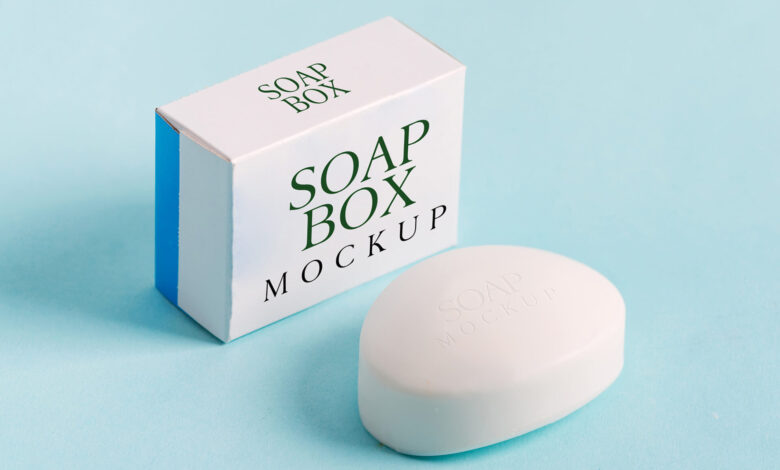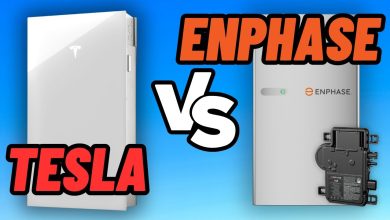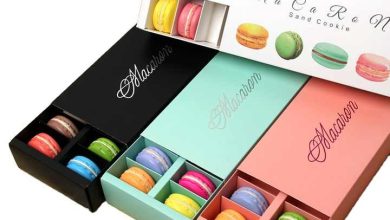The Growing Popularity of Minimalist Soap Packaging Designs
Custom Soap Boxes at Wholesale Rates

In recent years, the trend of minimalist design has spread across multiple industries, including the beauty and personal care sector. More specifically, minimalist soap packaging has become increasingly popular. This shift is not just about aesthetic appeal but also reflects changing consumer values. People today are more conscious about the environment, sustainability, and authenticity, all of which are central to the minimalist movement. Why minimalist soap packaging boxes is gaining so much attention and how it is changing the way brands design and sell their products.
Simplicity Speaks Volumes
Minimalist designs are all about keeping things simple and removing unnecessary elements. In soap packaging, this translates into clean lines, subtle color schemes, and a focus on the product itself. Rather than flashy graphics and over-the-top design, minimalist soap packaging draws attention through elegance and understated beauty.
The simplicity of this design can convey several important messages. First, it suggests that the product inside is pure and unadulterated, free from unnecessary additives or artificial ingredients. Second, it creates an air of sophistication, allowing the soap to stand out on the shelves without the need for elaborate packaging. It’s a visual message that appeals to customers seeking quality over quantity and substance over flash.
As consumers face an overwhelming number of choices, minimalist packaging helps cut through the clutter. It provides a calming, clear visual that highlights the soap’s natural beauty. Additionally, minimalist designs tend to make the product easier to identify and remember, which can significantly improve brand recognition. With fewer distractions, potential buyers can focus on the soap’s unique qualities, leading to a more thoughtful purchasing decision.
Sustainability: A Key Driver of the Trend
One of the biggest reasons behind the growing popularity of minimalist soap packaging is the increasing focus on sustainability. Today, more consumers are concerned about the environmental impact of the products they buy. Packaging waste has become a significant issue, and people are now actively seeking products that offer eco-friendly solutions.
Minimalist soap packaging often uses fewer materials, which directly leads to less waste. Many brands are opting for recyclable or biodegradable packaging, such as cardboard, glass, or plant-based plastics. By reducing packaging materials and focusing on simple, effective designs, brands are able to minimize their environmental footprint while still offering attractive, functional products.
Moreover, minimalist designs often allow customers to see more of the soap itself, reinforcing the idea that the product is natural and high-quality. This transparency in packaging aligns with the increasing consumer demand for honest and eco-conscious brands. By choosing minimalist packaging, soap companies can appeal to an audience that values sustainability and is willing to support companies that share their environmental concerns.
Establishing Brand Identity with Minimalism
Minimalist packaging is a powerful tool for building brand identity. When used effectively, a simple design can communicate a brand’s values and principles without the need for excessive messaging. A few key design elements—like a clean logo, elegant typography, and a simple color palette—can express sophistication, eco-consciousness, and authenticity.
By adopting minimalist packaging, brands present themselves as high-quality and trustworthy. These brands don’t rely on flashy designs to make a sale but instead focus on letting the product speak for itself. This creates a sense of confidence and transparency, which resonates with modern consumers who value authenticity.
Minimalist soap packaging also allows for easy integration into other marketing efforts. Whether a brand is showcasing its products on a website, social media, or in-store displays, simple packaging tends to be versatile and adaptable. The clean design can seamlessly blend into various marketing materials, helping to create a consistent and recognizable brand image across all platforms.
The Power of Typography in Minimalist Designs
Typography plays a crucial role in minimalist packaging. In designs where the goal is to keep things simple, the choice of font becomes incredibly important. A clean, modern font can add to the overall aesthetic of the packaging and communicate a sense of elegance and clarity.
Sans-serif fonts are commonly used in minimalist designs due to their simplicity and readability. These fonts help create a sense of modernity and freshness, which fits well with the overall look of minimalist soap packaging. The use of negative space around the typography also contributes to the clean, spacious feel of the design. This layout ensures that the product name or key information is easy to read without being cluttered or overwhelming.
In minimalist soap packaging, typography can be used to convey subtle messages about the brand. For example, a soft, round font might suggest a focus on natural ingredients, while a sleek, straight-edged font could convey luxury or professionalism. The combination of well-chosen typography and the right amount of space creates an overall harmonious look, reinforcing the brand’s identity and values.
The Cost-Effectiveness of Minimalist Packaging
While minimalist soap packaging is visually appealing, it’s also a cost-effective option for many brands. Simple designs require fewer materials and less complicated printing techniques, leading to savings in production costs. These savings can be significant, especially for smaller brands or startups that need to keep their overhead costs low.
In addition to the savings on production, minimalist packaging often results in lower shipping costs. Since these designs tend to use less material, the packages are lighter and take up less space. This means that the brand can save money on transportation and shipping, which is especially important for companies with large-scale distribution. For eco-conscious brands, the added benefit is that these savings can be reinvested into further sustainable practices or used to enhance other areas of the business.
The simplicity of minimalist soap packaging also allows for easier scalability. Whether a brand is producing a small batch of artisanal soap or a large volume of mass-produced products, minimalist designs are flexible enough to accommodate different production scales. This adaptability is one of the reasons why many soap brands, large and small, are turning to minimalist packaging as a cost-effective solution.
Personalization and Customization in Minimalist Soap Packaging
Although minimalist packaging is defined by its simplicity, that doesn’t mean it has to be generic or lacking in creativity. In fact, many soap brands are finding innovative ways to personalize their minimalist packaging, offering customers a unique and customized experience.
For example, some brands use custom stamps, handwritten labels, or limited-edition packaging to create a more personal connection with their customers. These small details make the product feel special and unique, adding value to the customer’s purchase. Personalization can also extend to the soap itself, with some brands offering customizable scents or formulations that are reflected in the packaging design.
Minimalist soap packaging allows for greater flexibility in personalization because the design is simple and easy to modify. This makes it an appealing option for brands looking to create bespoke packaging for special occasions, holiday editions, or exclusive product lines. By offering a customized experience, brands can create a sense of exclusivity and strengthen their relationship with their customers.
Meeting Consumer Demand for Simplicity and Transparency
The growing trend toward minimalist soap packaging aligns with broader shifts in consumer behavior. As people become more conscious of the environmental and social impact of their purchases, they are increasingly seeking brands that offer transparency and simplicity. Consumers today are looking for products that are honest and unpretentious, and minimalist designs help meet these expectations.
Simple packaging allows customers to focus on the quality and ingredients of the product itself. By removing unnecessary design elements and focusing on what truly matters, minimalist packaging makes it easier for consumers to understand what they’re buying and why it’s a good choice. This transparency is crucial in building trust with customers and encouraging repeat purchases.
Furthermore, minimalist designs are often associate with products that are natural, organic, and eco-friendly. As more consumers prioritize these values, minimalist soap packaging becomes an attractive option for brands looking to appeal to this growing market segment. The simplicity of the design mirrors the clean, wholesome qualities that many customers desire in personal care products.
The Future of Minimalist Soap Packaging
Looking ahead, the trend toward minimalist soap packaging is likely to continue evolving. As consumer preferences shift towards more sustainable, transparent, and eco-friendly products, minimalist designs will remain at the forefront of this movement. Soap brands that embrace simplicity and sustainability will be well-positioned for success in the future.
Additionally, there will likely be further innovations in materials and production techniques that allow brands to create even more sustainable and unique packaging solutions. Whether through the use of recycled materials, plant-based plastics, or new manufacturing methods, the future of minimalist soap packaging is bound to be shape by a continued commitment to sustainability and environmental consciousness.
Conclusion
In conclusion, the growing popularity of minimalist soap packaging reflects broader shifts in consumer values, emphasizing simplicity, sustainability, and authenticity. As more brands adopt minimalist designs, they are not only meeting the demands of modern consumers but also helping to shape the future of the beauty and personal care industry.


